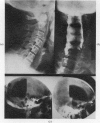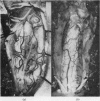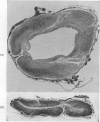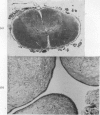Full text
PDF




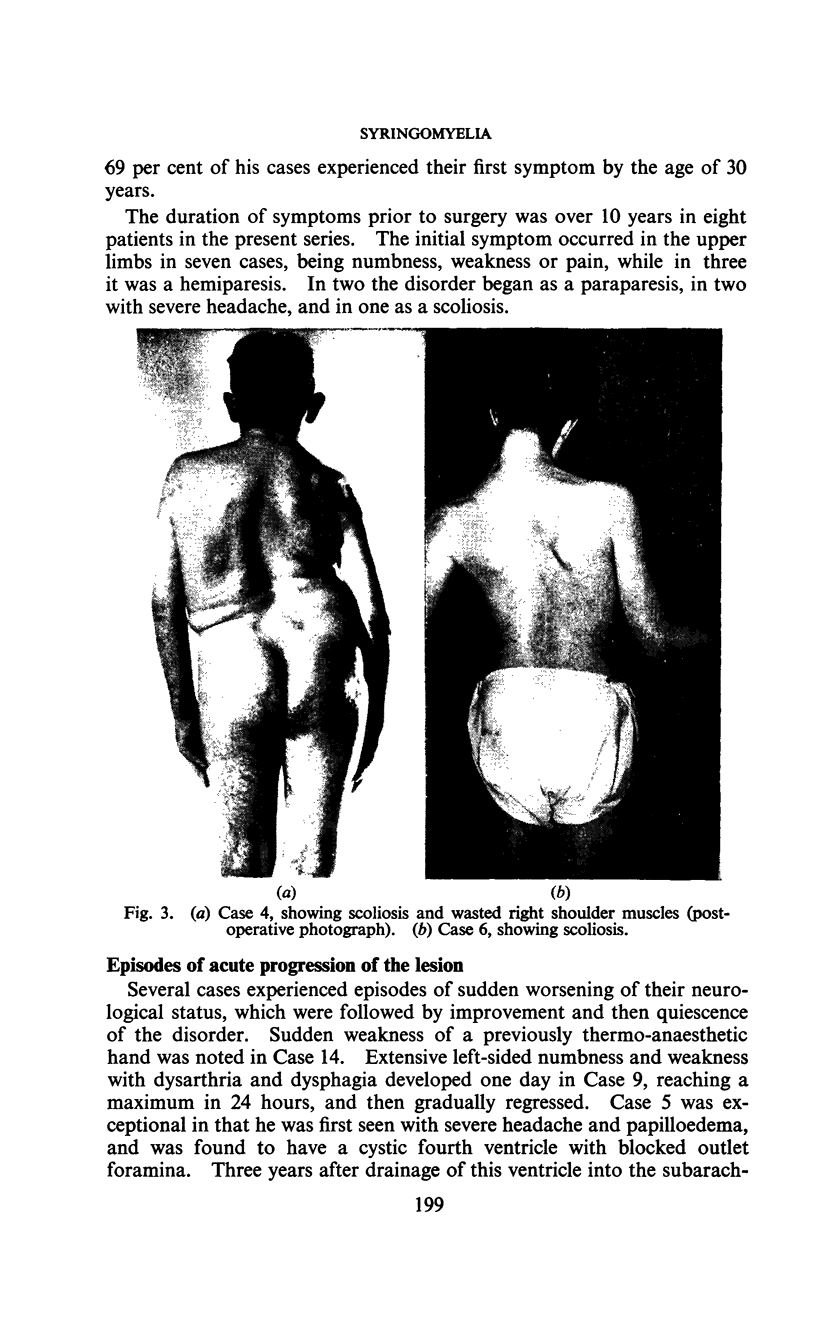





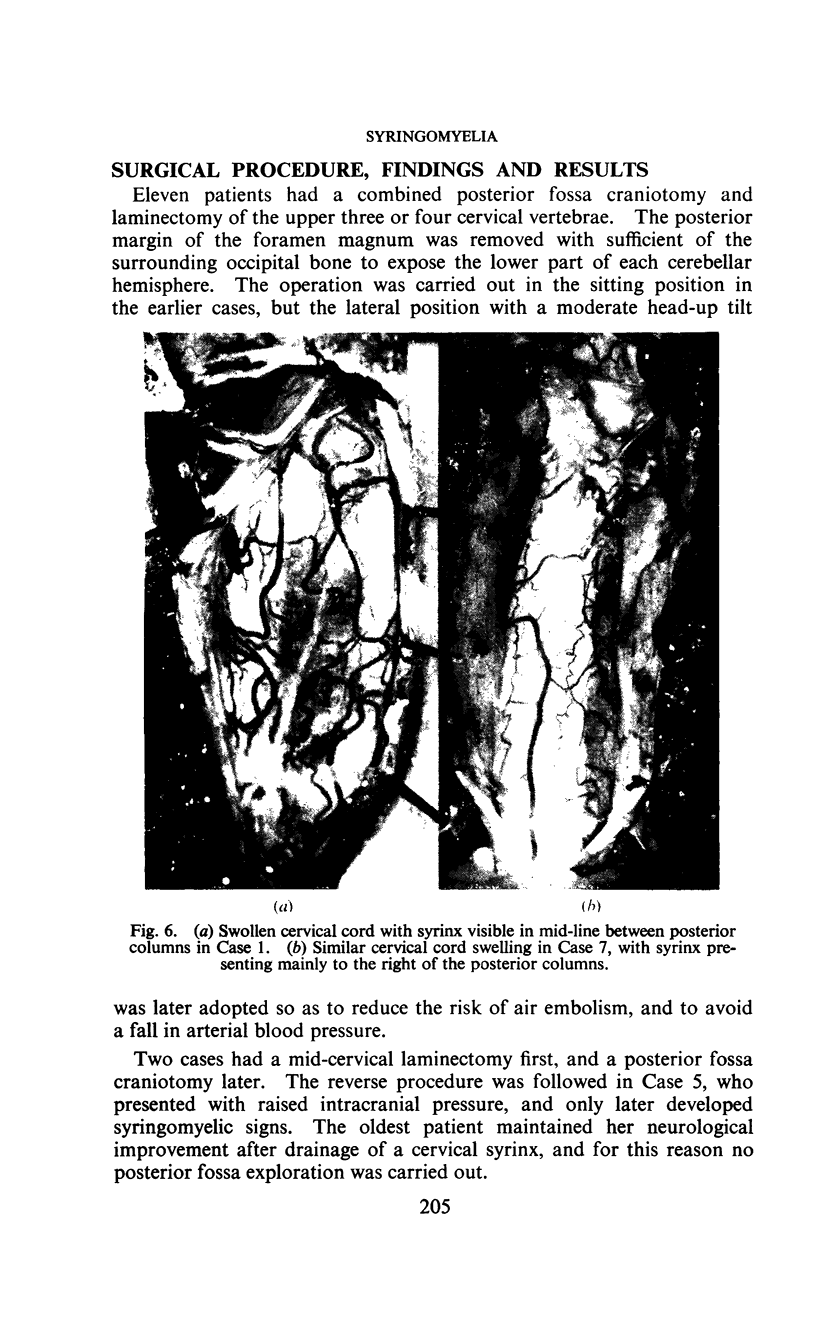
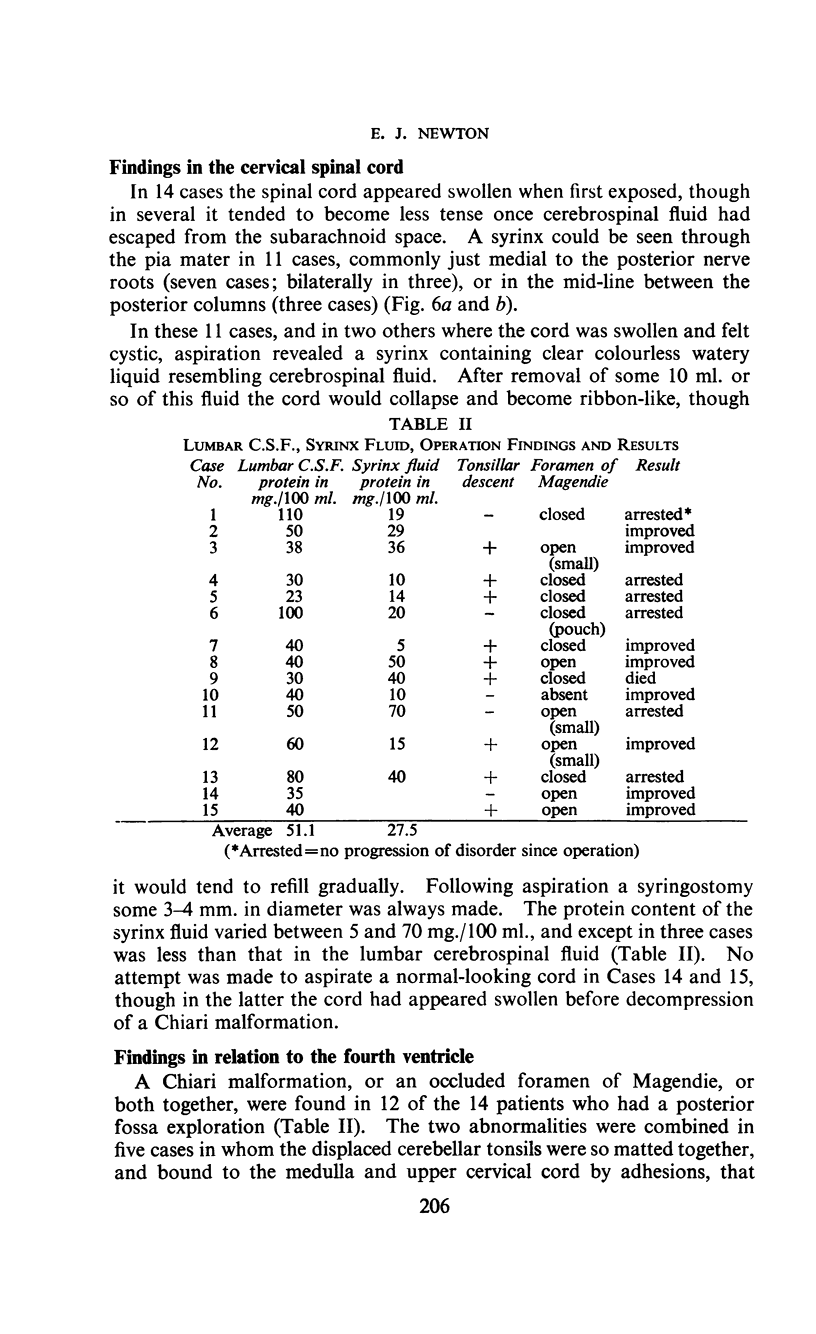


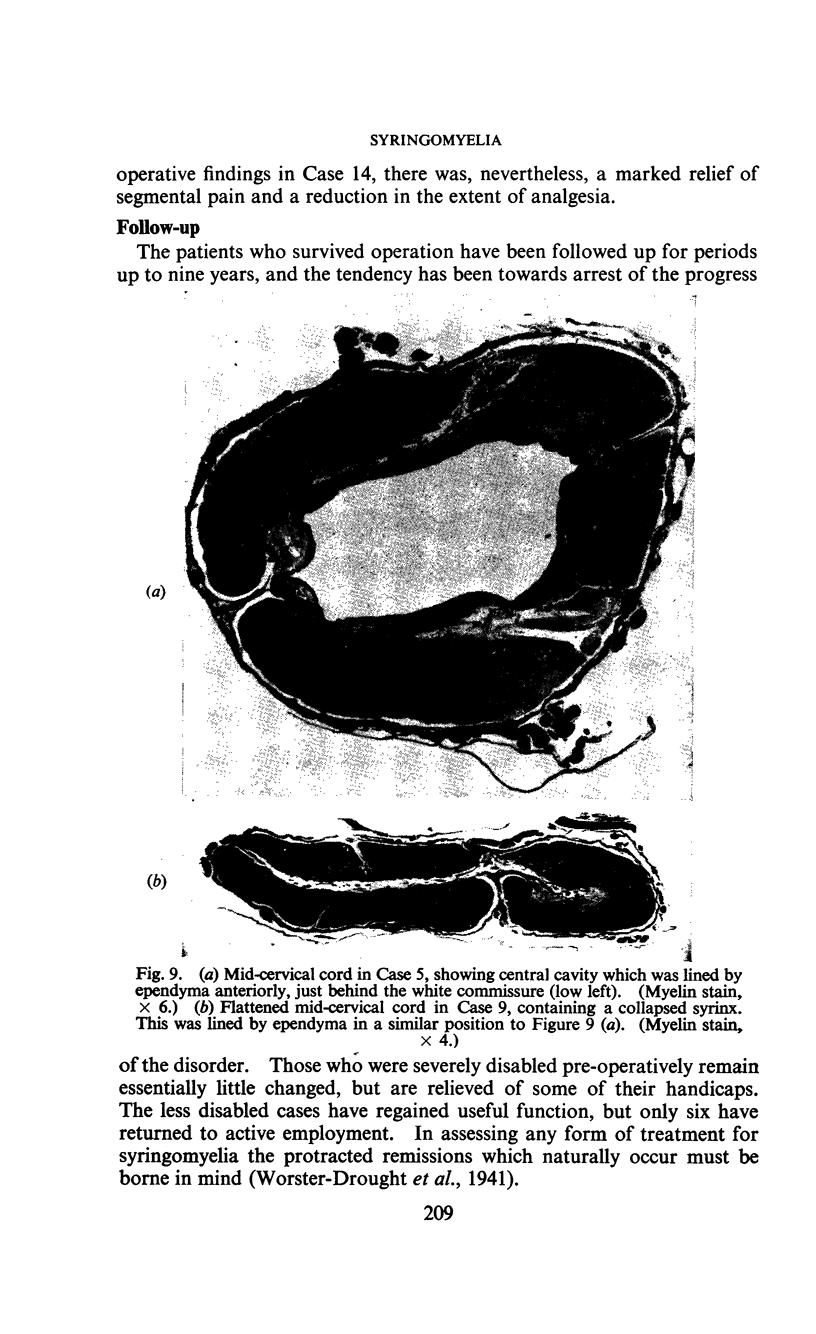


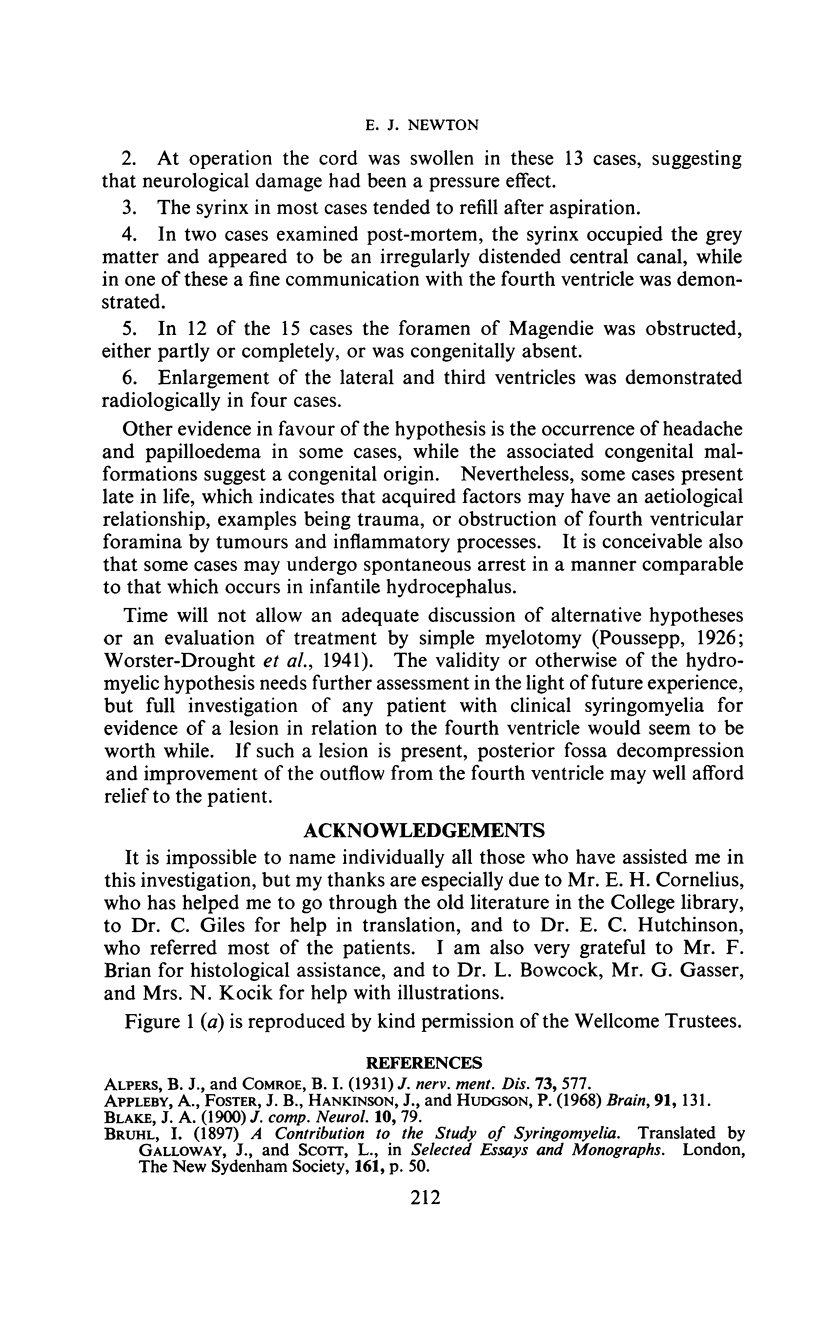

Images in this article
Selected References
These references are in PubMed. This may not be the complete list of references from this article.
- Appleby A., Foster J. B., Hankinson J., Hudgson P. The diagnosis and management of the Chiari anomalies in adult life. Brain. 1968 Mar;91(1):131–140. doi: 10.1093/brain/91.1.131. [DOI] [PubMed] [Google Scholar]
- CONWAY L. W. Radiographic studies of syringomyelia. The hydrodynamics of the syrinx in relation to therapy. Trans Am Neurol Assoc. 1961;86:205–206. [PubMed] [Google Scholar]
- GARDNER W. J., ABDULLAH A. F., McCORMACK L. J. The varying expressions of embryonal atresia of the fourth ventricle in adults: Arnold-Chiari malformation, Dandy-Walker syndrome, arachnoid cyst of the cerebellum, and syringomyelia. J Neurosurg. 1957 Nov;14(6):591–605. doi: 10.3171/jns.1957.14.6.0591. [DOI] [PubMed] [Google Scholar]
- GARDNER W. J., ANGEL J. The mechanism of syringomyelia and its surgical correction. Clin Neurosurg. 1958;6:131–140. doi: 10.1093/neurosurgery/6.cn_suppl_1.131. [DOI] [PubMed] [Google Scholar]
- GARDNER W. J., GOODALL R. J. The surgical treatment of Arnold-Chiari malformation in adults; an explanation of its mechanism and importance of encephalography in diagnosis. J Neurosurg. 1950 May;7(3):199–206. doi: 10.3171/jns.1950.7.3.0199. [DOI] [PubMed] [Google Scholar]
- GARDNER W. J. HYDRODYNAMIC MECHANISM OF SYRINGOMYELIA: ITS RELATIONSHIP TO MYELOCELE. J Neurol Neurosurg Psychiatry. 1965 Jun;28:247–259. doi: 10.1136/jnnp.28.3.247. [DOI] [PMC free article] [PubMed] [Google Scholar]
- GARDNER W. J., KARNOSH L. J., ANGEL J. Syringomyelia; a result of embryonal atresia of the foramen of the Magendie. Trans Am Neurol Assoc. 1957;82ND:144–145. [PubMed] [Google Scholar]
- GREENWALD C. M., EUGENIO M., HUGHES C. R., GARDNER W. J. The importance of the air shadow of the cisterna magna in encephalographic diagnosis. Radiology. 1958 Nov;71(5):695–701. doi: 10.1148/71.5.695. [DOI] [PubMed] [Google Scholar]
- Heinz E. R., Schlesinger E. B., Potts D. G. Radiologic signs of hydromyelia. Radiology. 1966 Feb;86(2):311–318. doi: 10.1148/86.2.311. [DOI] [PubMed] [Google Scholar]
- MARTIN C., MAURY M. SYNDROME SYRINGOMY'ELIQUE APR'ES PARAPL'EGIE TRAUMATIQUE. A PROPOS DE SIX CAS DE SYNDROME SYRINGOMY'ELIQUE CERVICAL SURVENANT DANS DES PARAPL'EGIES DORSALE OU LOMBAIRE. Presse Med. 1964 Nov 14;72:2839–2842. [PubMed] [Google Scholar]
- MCHUGH P. R. OCCULT HYDROCEPHALUS. Q J Med. 1964 Apr;33:297–308. [PubMed] [Google Scholar]
- McIlroy W. J., Richardson J. C. Syringomyelia: a clinical review of 75 cases. Can Med Assoc J. 1965 Oct 2;93(14):731–734. [PMC free article] [PubMed] [Google Scholar]
- McRae D. L., Standen J. Roentgenologic findings in syringomyelia and hydromyelia. Am J Roentgenol Radium Ther Nucl Med. 1966 Nov;98(3):695–703. doi: 10.2214/ajr.98.3.695. [DOI] [PubMed] [Google Scholar]
- PEACH B. CYSTIC PROLONGATION OF FOURTH VENTRICLE. AN ANOMALY ASSOCIATED WITH THE ARNOLD-CHIARI MALFORMATION. Arch Neurol. 1964 Dec;11:609–612. doi: 10.1001/archneur.1964.00460240041005. [DOI] [PubMed] [Google Scholar]
- SPILLANE J. D., PALLIS C., JONES A. M. Developmental abnormalities in the region of the foramen magnum. Brain. 1957 Mar;80(1):11–48. doi: 10.1093/brain/80.1.11. [DOI] [PubMed] [Google Scholar]
- WELLS C. E., SPILLANE J. D., BLIGH A. S. The cervical spinal canal in syringomyelia. Brain. 1959 Mar;82(1):23–40. doi: 10.1093/brain/82.1.23. [DOI] [PubMed] [Google Scholar]
- WOLF B. S., KHILNANI M., MALIS L. The sagittal diameter of the bony cervical spinal canal and its significance in cervical spondylosis. J Mt Sinai Hosp N Y. 1956 May-Jun;23(3):283–292. [PubMed] [Google Scholar]





